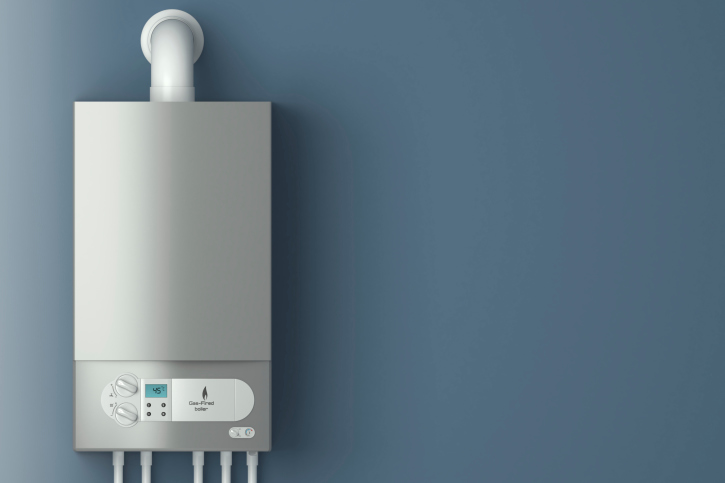 There’s a good chance if your children have recently moved out that your home is feeling a lot larger than it used to, and perhaps you’re re-considering the extra space. If downsizing to a condo is on your mind and you’re weighing the benefits of this kind of move, here are some that might make it worth the switch in size.
There’s a good chance if your children have recently moved out that your home is feeling a lot larger than it used to, and perhaps you’re re-considering the extra space. If downsizing to a condo is on your mind and you’re weighing the benefits of this kind of move, here are some that might make it worth the switch in size.
A Little Extra Money
With the additional money you should be making off the sale of your home, there’s a good chance that downsizing may provide you with extra assets to sock away for retirement, travel or whatever your heart fancies. If you don’t need the money, it might not matter, but in the retirement years a little extra can be of benefit for many.
Minimize Your Costs
Usually, there are many utility and heating costs that go along with home ownership, but by moving into a condo you can alleviate many monthly payments instantly. Instead of paying for every utility, condo living can help to simplify and minimize the amount you owe each month.
Free Up Your Retirement
Often times it may seem like home ownership is the dream, but many people approaching retirement would rather have the flexibility of renting. Because there are limited responsibilities with a rental, it means you can spend the winter months in Mexico without having to worry about who will take care of your home.
A Condominium Community
The great thing about many condo buildings is that they are built close to amenities like grocery stores, drycleaners and restaurants, so you don’t have to worry about venturing far out. It might not seem important if you’re used to driving to the store to make your purchases, but being able to walk might make you a convert to a different way of life.
Forget About The Maintenance
If you’ve gotten used to all of the maintenance that goes into a home, downsizing can be a great relief in terms of the time you’ll be saving. Instead of a lawn to cut or a multi-level home you’re responsible for, you’ll be able to rely on the building manager to do this for you.
It can be comforting to have a home you’ve bought and paid for that belongs to you, but by downsizing you may be able to save on time and significantly lower your living costs. If you’re considering purchasing a condo and would like to learn more about your options, you may want to contact one of our local real estate agents for more information.
 One of the top ways to build wealth is to own a home; however, it can be challenging to qualify for a home loan. Not everyone has the finances to maintain a house, and some people might not be ready to settle down for a prolonged amount of time. Therefore, everyone has to think carefully before deciding homeownership is the right move. What are the top signs that someone is ready to be a homeowner?
One of the top ways to build wealth is to own a home; however, it can be challenging to qualify for a home loan. Not everyone has the finances to maintain a house, and some people might not be ready to settle down for a prolonged amount of time. Therefore, everyone has to think carefully before deciding homeownership is the right move. What are the top signs that someone is ready to be a homeowner?  Are you currently shopping for a new home? While it’s true that real estate transactions can be stressful, this stress can be minimized by following a few simple tips. For example, following proper etiquette plays a big role in making your real estate experience go smoothly, and in this post we’ll share four key etiquette tips that are sure to help.
Are you currently shopping for a new home? While it’s true that real estate transactions can be stressful, this stress can be minimized by following a few simple tips. For example, following proper etiquette plays a big role in making your real estate experience go smoothly, and in this post we’ll share four key etiquette tips that are sure to help. One of the most common dreams is homeownership; however, the cost of buying a house is rising quickly, and many children cannot afford to buy a house even after they finish school. They might be encumbered with student loans, and they could have a difficult time finding a job. Fortunately, there are ways parents can help their adult children buy a home.
One of the most common dreams is homeownership; however, the cost of buying a house is rising quickly, and many children cannot afford to buy a house even after they finish school. They might be encumbered with student loans, and they could have a difficult time finding a job. Fortunately, there are ways parents can help their adult children buy a home.
 With all of the things that you need to fit into the kitchen, being economical with how you use your space can be a very important part of making it work. If you’re looking for some new ideas for how to use your space to maximum capacity, here are some hacks that might just make a marked difference!
With all of the things that you need to fit into the kitchen, being economical with how you use your space can be a very important part of making it work. If you’re looking for some new ideas for how to use your space to maximum capacity, here are some hacks that might just make a marked difference! Large water heaters are unsightly appliances that home-sellers would rather hide. Although it’s not always possible to banish these structures, it is possible to replace them with a version that is not as overbearing. Tankless water heaters have the potential to make one home stand out amongst the competition, but they do have some disadvantages along with the benefits.
Large water heaters are unsightly appliances that home-sellers would rather hide. Although it’s not always possible to banish these structures, it is possible to replace them with a version that is not as overbearing. Tankless water heaters have the potential to make one home stand out amongst the competition, but they do have some disadvantages along with the benefits. Last week’s scheduled economic reporting included readings on sales of new and previously-owned homes along with weekly data on mortgage rates and jobless claims.
Last week’s scheduled economic reporting included readings on sales of new and previously-owned homes along with weekly data on mortgage rates and jobless claims. With all of the expense that can go into buying and selling a home, it’s good to be aware of what you can claim and how a home can benefit you come tax time. When the New Year rolls around and you’re sitting down to the task of completing your taxes, here are a few things that you’ll want to keep in mind.
With all of the expense that can go into buying and selling a home, it’s good to be aware of what you can claim and how a home can benefit you come tax time. When the New Year rolls around and you’re sitting down to the task of completing your taxes, here are a few things that you’ll want to keep in mind. Last week’s economic reports included readings from the National Association of Home Builders on housing markets and the monthly post-meeting statement from Federal Reserve policymakers. Fed Chair Jerome Powell also gave a press conference. Weekly readings on mortgage rates and jobless claims were also published.
Last week’s economic reports included readings from the National Association of Home Builders on housing markets and the monthly post-meeting statement from Federal Reserve policymakers. Fed Chair Jerome Powell also gave a press conference. Weekly readings on mortgage rates and jobless claims were also published.